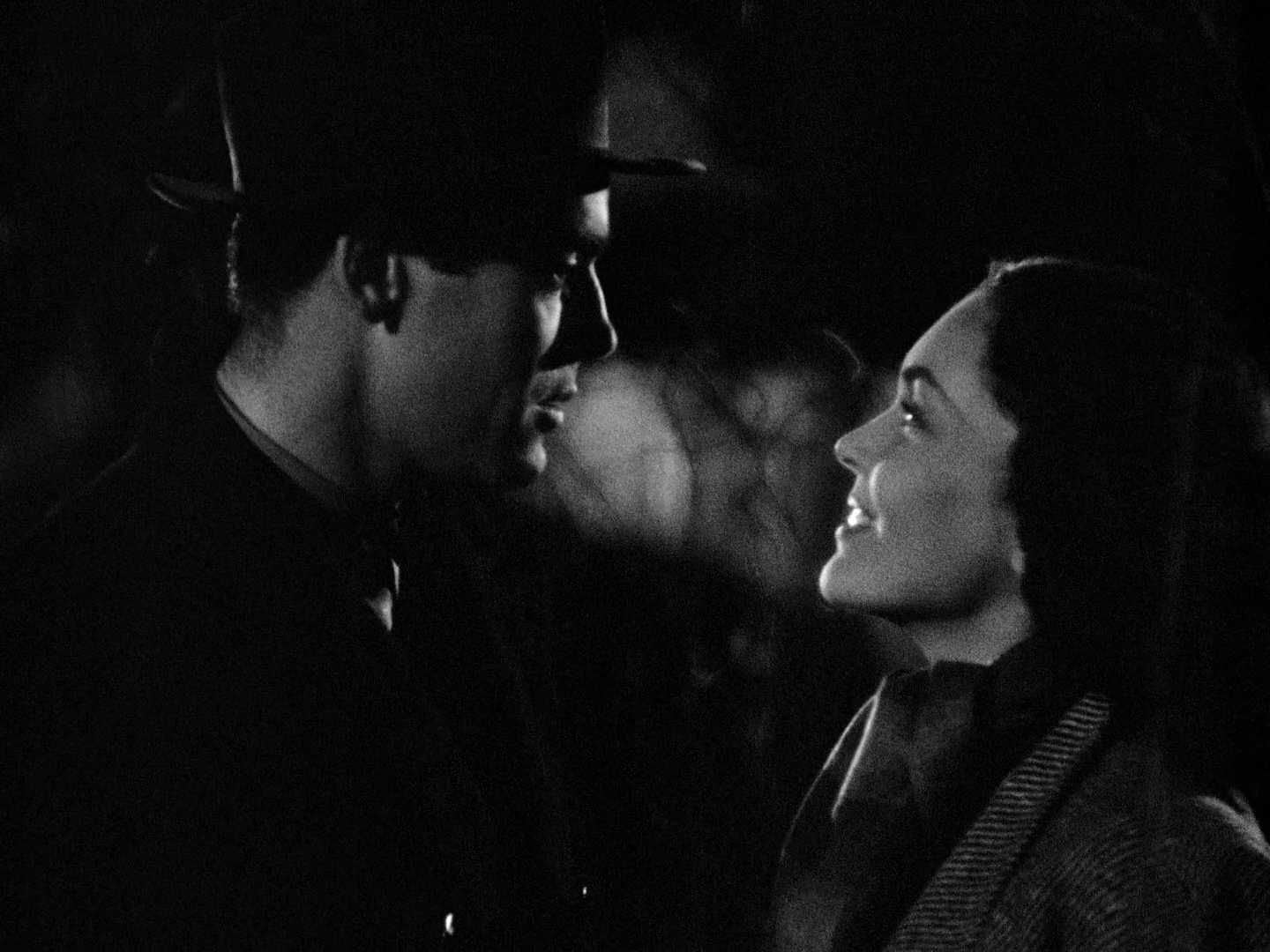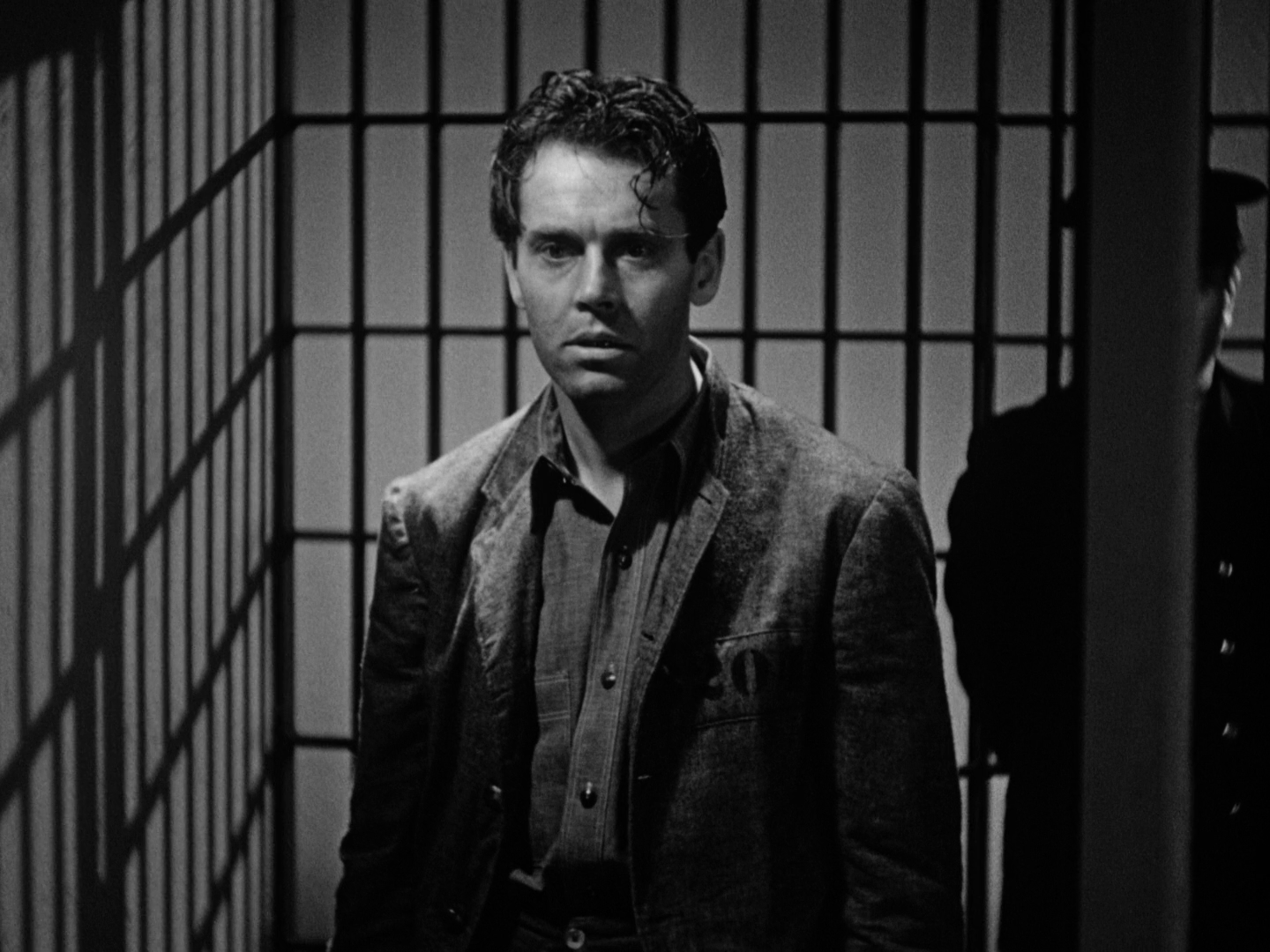
Getting back into E.A. Dupont.
The accepted narrative, accepted by most who even think about old Ewald, is that he was a big innovator in VARIETE (“the unchained camera”) but was too turgid when sound came in (ATLANTIC and the world’s longest, least dramatic dramatic pause) and then just foundered and floundered in B movies.

Given that Dupont had to struggle with formidable opponents in his career — Hitler AND the Dead End Kids — his downward career arc, or spiral, is understandable. But ATLANTIC actually has, along with the turgid stretches, some riveting and innovative sound filmmaking — it’s maybe the scariest Titanic movie — and CAPE FORLORN is quite stupendous. Then there’s THE SCARF, a clever and stylish B noir where Dupont shows he’s still got it. He can take the breath away with just a shot of someone in a chair in a room, doing nothing (this happens TWICE).
THE SCARF was Dupont’s comeback film after a decade out of the biz, resulting from an incident on HELL’s KITCHEN where he slapped one of the Dead End Kids for mocking his accent. While I don’t condone slapping youngsters (by 1939, were any of the kids actually kids?), I can see why Dupont’s immigrant status might have been a sore spot for him, and hitting the Dead End Kids seems to have been a popular way of dealing with them. Cagney once hit one of the Dead End Kids with one of the other Dead End Kids, and they didn’t fire HIM. (“I think they thought they were dealing with Bogart or something,” he wrote of the provocation leading to the head-knocking).


Anyway, THE BISHOP MISBEHAVES is before all that, but it shows that Dupont was already in B-movie terrain. But it also shows that he was cured of his earlier slowness by 1935. In fact, his first Hollywood film was the sexy, funny and very fast LADIES MUST LOVE at Universal.
BISH is from a play by Frederick J. Jackson, who also wrote THE GREAT GAMBINI, which I like. Edmund Gwenn plays the titular bish, an addict of crime fiction who gets the chance to play detective when he stumbles on a real robbery, conducted by sympathetic young lovers Maureen O’Sullivan and Norman Foster (one of the medium-sized lug’s more appealing roles) against nouveau riche crooks Reginald Owen and Lilian Bond (wey-hey, Lilian Bond!). There are atmospheric scenes in Limehouse (including a flash of opium den in a montage) and a charming Hollywood England feel throughout. Effervescent yet criminous.

Edmund Gwenn is a lovely actor, though he doesn’t really need to play his part an octave higher than usual. I guess the clergy are supposed to have had all their testosterone sucked out of them. Even the nuns. Gwenn has a mild manner anyway, and he’d have been even more loveable in his natural register. Bond and Owen, playing lower-class, don’t so much drop their aitches as throw them strenuously over their shoulders. You can feel them striving to remember not to sound pukkah.
The theatrical origins of the story are pretty obvious, and when a character remarks how he was nervous when anyone approached the vase in which some loot was hidden, and we realise we hadn’t been aware of this, it’s clear that Dupont is no Hitchcock. He’d concentrated on the dialogue, and forgotten to shoot closeups of the vase and the anxious glances.

But there’s some good filmmaking — a bit where everybody leaves the scene and the room stands empty could have seemed hideously stagey, but Dupont twists it into cinema with a dramatic track-in on the door.
The director’s compositional gift for snug, squarish groupings is in some evidence, and he’s helped by the fact that Gwenn has a 1:1.33 head. Dupont’s smutty side — he’s really rather salacious in unexpected ways and places — manifests itself around Lilian Bond and her low-cut gown. It’s a modest movie that shows an increase in speed and efficiency, but a loss of individuality.


Fortunately, Dupont wasn’t licked yet. More on him soon, I hope.
THE BISHOP MISBEHAVES stars Dr. Athelny; Jane Parker; Mrs. Morehead; another Dr. Athelny; Casper Gutman; Billy Boyle; Gladys; High Sheriff of Nottingham; Hives – the Butler; Black Dog; Dr. Doremus; Amschel Rothschild; Tabbs; ‘Sugar’ Steve; and Jameson.















































































